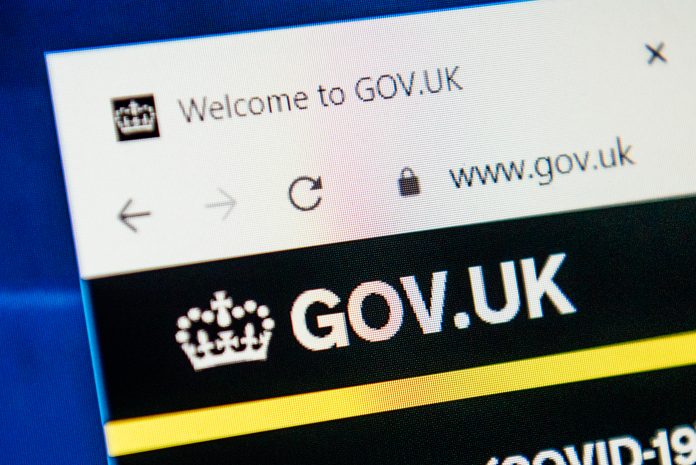Marc Zottner, global application modernisation lead, VMware Tanzu, discusses the transformation of government software development and digital services
From healthcare to taxation and housing, governments across the world have been investing heavily in digitising key services for their citizens. The benefits of doing so are numerous, particularly when many nations are focused on cutting costs and improving efficiencies. There can often be better collaboration between departments and a reduced burden on IT when delivered using cloud-based technologies.
Simultaneous with this internal evolution, citizens are becoming increasingly digitised themselves. Therefore, offering services in a familiar format is an ideal way to improve user experiences and increase participation and interactivity.
Over the past 18 months, the pandemic has vastly accelerated the adoption of digital in the public sector, turning it from a sideshow into the main event.
With track and trace efforts being rolled out online, and in-person GP appointments minimised – 90% of consultations in the UK were remote in April 2020 – the digitalisation of health services has become ‘the norm’ for citizens everywhere.
Who wins the digital World Cup?
Even before the pandemic, many governments were struggling to modernise services. An interesting insight to share here is that even the most powerful economies are not necessarily the strongest digitally.
Last year’s United Nations E-Government Survey is possibly our most accurate bellwether of performance, measuring each nation by an E-Government Development Index (EGDI). The EGDI consists of three indexes (Online Service Index, Telecommunication Index and Human Capital Index) that are equally weighted and cover a broad range of topics that are relevant for e-government. According to the UN themselves, “the way forward is a new ‘digital normal’ in responding to global challenges and pursuing sustainable development”.
The survey reveals some surprising findings, with a number of European heavyweights lagging behind relative to their economic and political influence. Germany for example, ranks a lowly 59th out of 193, despite being positioned firmly in the world’s top five biggest economies. The UK places highly (just outside of the top five globally), scoring particularly well in online services offerings.
However, the Scandinavian nations, particularly Finland and Denmark are seen by many as the leaders in digital government, both in Europe and worldwide. The Finnish government attributes this success partly to a long history of IT in public life, with the first computers being installed in the Social Security Institution and in Postbank in 1958. More important, however, is mutual trust between the government and its citizens. In their words, “In Finland, citizens and businesses trust government agencies to provide services in a reliable, impartial and timely manner. Government trusts citizens and businesses.”
What’s more, as in the private sector, openness and collaboration is the key to innovation. The Finnish government is eager to learn from and work with other nations, arguing that the exchange of experiences and best practices is beneficial to the digitalisation of government and public services in its own country. Ultimately, each nation has its own agenda and approach. There is a lot they can learn from each other.
Digital government trends across the world
There is a plethora of country-specific laws and digital government initiatives that aim to rethink the way public sector IT is done. One great example of the collaborative approach mentioned earlier is Germany’s Online Access Act which aims to bring together the country’s 16 federal states and 11,000 local governments under one digital banner.
This means that all services offered at federal, state and local levels are to be accessible online via their own portals. With one single digital account, citizens are able to reach all federal, state and local services in just three clicks. In order to enable this, uniform IT standards and interfaces are necessary across the board.
Another exciting development is the public sector taking cues from Silicon Valley in order to become more efficient, moving from a bureaucratic culture to a generative one. One pioneering example is Kessel Run, which aims to revolutionise the software acquisition process for the United States Air Force (USAF).
Eric Schmidt, former CEO of Google, once pointed out that “the Department of Defense (DoD) violates pretty much every rule in modern product development”. Kessel Run is a prime example of the DoD pivoting and looking to transform into a software company. Where previously it took an average of eight years to deliver software to its airmen, Kessel Run delivered a viable product into production within 120 days. One of these applications saved the USAF $428k a day in fuel, which was enabled by reengineering the procurement process with the help of VMware Tanzu.
Kessel Run shows the importance of small experiments driving innovation. Not everything can be designed and specified up front, so experimentation is key to explore, discover, learn, understand end-users and validate product hypotheses.
Governments embracing open source
Governments are also innovating their digital services in other ways that take inspiration from the software industry. For example, there is strong momentum behind adoption and contribution to open-source software and new collaborative models. Open source is becoming the new normal for governments, particularly during the pandemic where collaboration is so crucial.
We’ve seen dozens of Covid-19 contact tracking apps published on GitHub or GitLab by governments, such as Germany’s “Corona-Warn” and France’s “TousAntiCovid”. There have also been various digital projects providing open source utility libraries, tools, API documentation and application implementations from governmental institutions, spanning health (NHS-X), intelligence (GCHQ), and justice (HMCTS) entities in the UK, for example.
The various apps and solutions that have emerged during the pandemic demonstrate that governments can quickly provide innovative digital solutions that solve real-world challenges. Starting small and moving fast in iterations is the key to maintain momentum and drive rapid, impactful results.
It’s clear that digital is now the new normal for government services across the globe. Public sector institutions have embraced new ways of developing software that arguably matches more-lauded fintech and start-up companies. They can be just as disruptive, and their capacity to evolve and transform themselves holistically to bring more value and services to citizens is humbling.
Nevertheless, to be successful at building impactful software products, a different approach and mindset are needed from building an urban infrastructure project. Many government institutions crave to transform more into agile software companies, especially as moving from a bureaucratic structure to a generational culture is smoother for them than for many private sector companies.
At the same time, this collaborative community mindset, inherent in the way good governments operate, must continue in this same vein, and provide citizens with personalised, on-demand, intuitive digital services that make their lives simpler and safer.












I’m amazed, to say the least. It’s uncommon that I find a blog that is both informative and enjoyable.